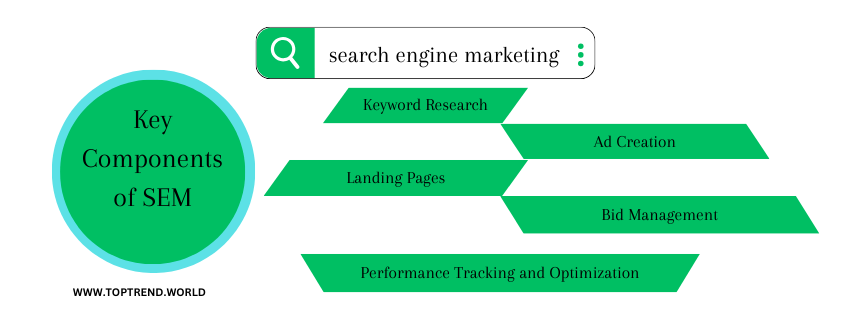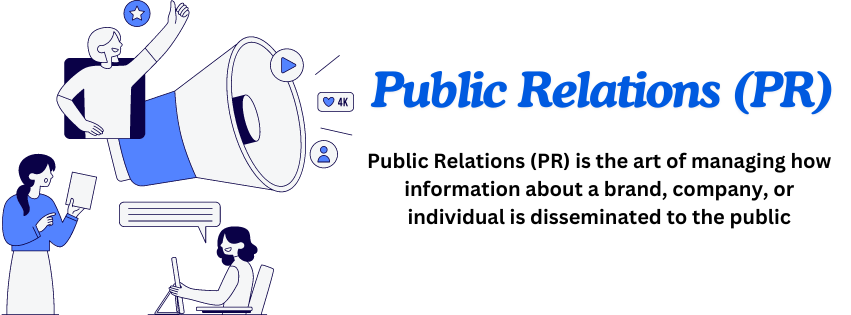Strategies for Success
In the ever-evolving digital landscape, Search Engine Marketing (SEM) remains a critical component of online marketing strategies. Whether you’re a small business owner or a seasoned marketer, understanding SEM can help you enhance your online presence and drive targeted traffic to your website. In this blog, we’ll explore what SEM is, why it’s important, and how you can effectively leverage it to achieve your marketing goals.

What is Search Engine Marketing (SEM)?
Search Engine Marketing (SEM) is a digital marketing strategy used to increase the visibility of a website in search engine results pages (SERPs) through paid advertising. Unlike Search Engine Optimization (SEO), which focuses on earning organic rankings, SEM involves paying for ad placements. The most common platform for SEM is Google Ads, but other search engines like Bing and Yahoo also offer advertising opportunities.
Why SEM is Crucial for Your Business
- Immediate Results: Unlike SEO, which can take months to show results, SEM can drive traffic to your site almost instantly once your campaign is live.
- Targeted Traffic: SEM allows you to target specific keywords, demographics, locations, and times. This precision helps attract users who are actively searching for products or services like yours.
- Control and Flexibility: With SEM, you have control over your budget, ad copy, and targeting. You can quickly adjust your campaigns based on performance metrics and market trends.
- Measurable ROI: SEM platforms provide detailed analytics and reporting tools, enabling you to measure the effectiveness of your ads and calculate return on investment (ROI).
Key Components of SEM
- Keyword Research: Identifying the right keywords is crucial. Tools like Google Keyword Planner can help you find terms with high search volume and relevance to your business.
- Ad Creation: Craft compelling ad copy that includes your targeted keywords, a clear value proposition, and a strong call to action (CTA). Your ad should entice users to click through to your website.
- Landing Pages: Ensure that your landing pages are optimized for conversions. They should be relevant to your ad content, user-friendly, and designed to encourage visitors to take action.
- Bid Management: SEM platforms use a bidding system to determine ad placement. You can choose between manual and automated bidding strategies. Regularly review and adjust your bids based on performance.
- Performance Tracking and Optimization: Monitor key metrics such as click-through rate (CTR), conversion rate, and cost per acquisition (CPA). Use this data to refine your campaigns, adjust keywords, and improve ad copy.
Best Practices for SEM Success
- Start with a Clear Goal: Define what you want to achieve with your SEM campaign—whether it’s increasing website traffic, generating leads, or driving sales.
- Conduct Thorough Keyword Research: Use a mix of broad, phrase, and exact match keywords to capture different types of search queries. Consider using negative keywords to filter out irrelevant traffic.
- Optimize Ad Copy and Extensions: Test different versions of your ad copy to see what resonates best with your audience. Utilize ad extensions like sitelinks, callouts, and structured snippets to enhance your ads’ visibility and relevance.
- Regularly Review and Adjust Your Campaigns: SEM is not a set-it-and-forget-it strategy. Continuously analyze your campaign performance and make necessary adjustments to optimize results.
- Leverage Remarketing: Target users who have previously visited your website but did not convert. Remarketing ads can help bring them back and increase the chances of conversion.
Common SEM Pitfalls to Avoid
- Ignoring Mobile Optimization: With a significant amount of web traffic coming from mobile devices, ensure your ads and landing pages are optimized for mobile users.
- Overlooking Ad Quality: Poorly written ad copy or irrelevant landing pages can lead to low Quality Scores and higher costs. Invest time in crafting high-quality ads and optimizing landing pages.
- Neglecting Competitor Analysis: Keep an eye on your competitors’ SEM strategies. Analyze their keywords, ad copy, and overall approach to identify opportunities and stay ahead.
- Failing to Set a Realistic Budget: SEM can be competitive and costly, especially in high-demand industries. Set a budget that aligns with your goals and be prepared to adjust as needed.
Conclusion
Search Engine Marketing is a powerful tool for driving targeted traffic and achieving measurable results. By understanding its key components and following best practices, you can create effective SEM campaigns that help you reach your business objectives. Remember, SEM is an ongoing process of optimization and refinement, so stay proactive, keep learning, and adapt to the ever-changing digital landscape.
If you have any questions or need assistance with your SEM strategy, feel free to reach out. Happy marketing!




